On our recent camping/photo trip to southwest Montana I observed and photographed a Ferruginous Hawk behavior that has me baffled.
Note: These are meant as documentary images only. The power pole setting is an ugly one with wires everywhere and there were clouds behind me so the birds kept going into and out of shade. To add to my woes, for one series of shots the white balance on my Canon 7D went a little wonky for some unknown reason (both of my 7D’s have done that a couple of times over the years).
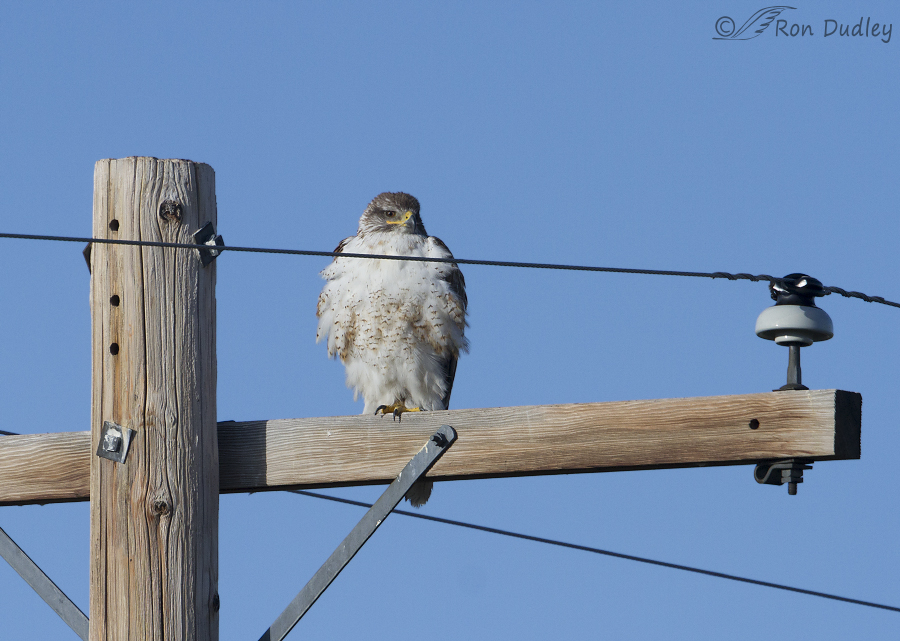
It was early morning on June 29 at the west end of the Centennial Valley when we spotted this Ferruginous Hawk perched on a power pole. As many of you know I’m not fond of this type of setting but I stopped and watched the bird for a while, thinking I might get lucky with some take-off shots.
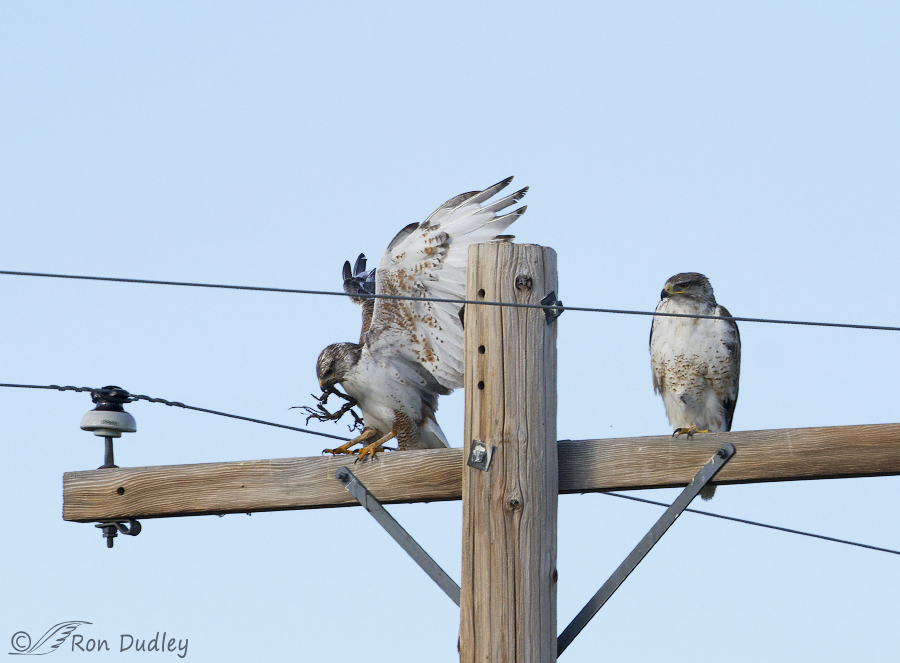
Suddenly and very unexpectedly another Ferrug carrying nesting material landed next to the first one. The bird on the right was noticeably the larger of the two so I believe it to be the female of a mated pair.
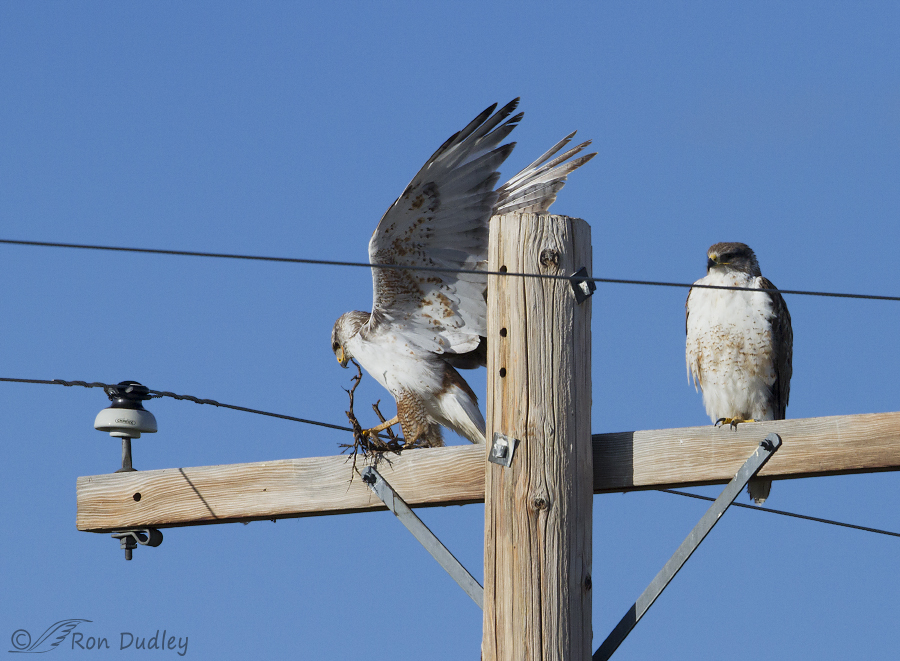
The male on the left fiddled and fussed with the nesting material for about 4 minutes but the female didn’t seem to be particularly interested…
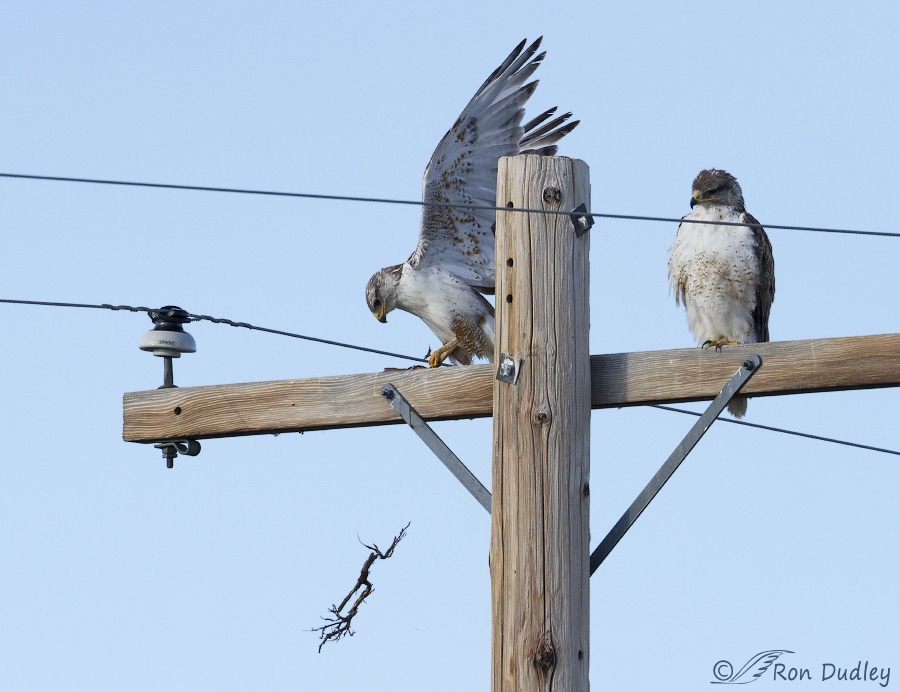
and eventually the male dropped the nesting material, which to my eye looks to be a dead sagebrush branch.
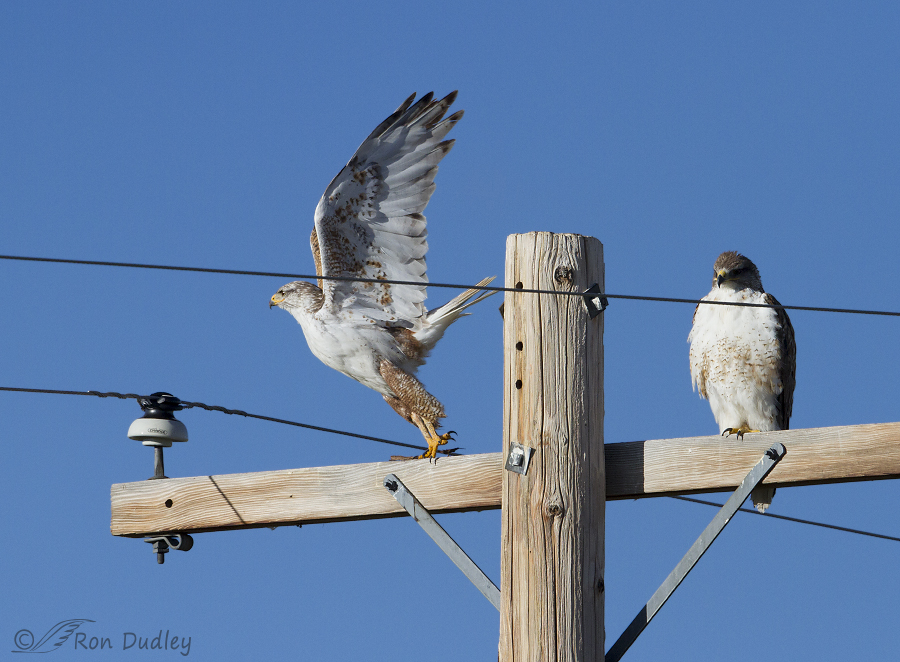
Then he flew off and I thought he was gone for good. But he fooled me…
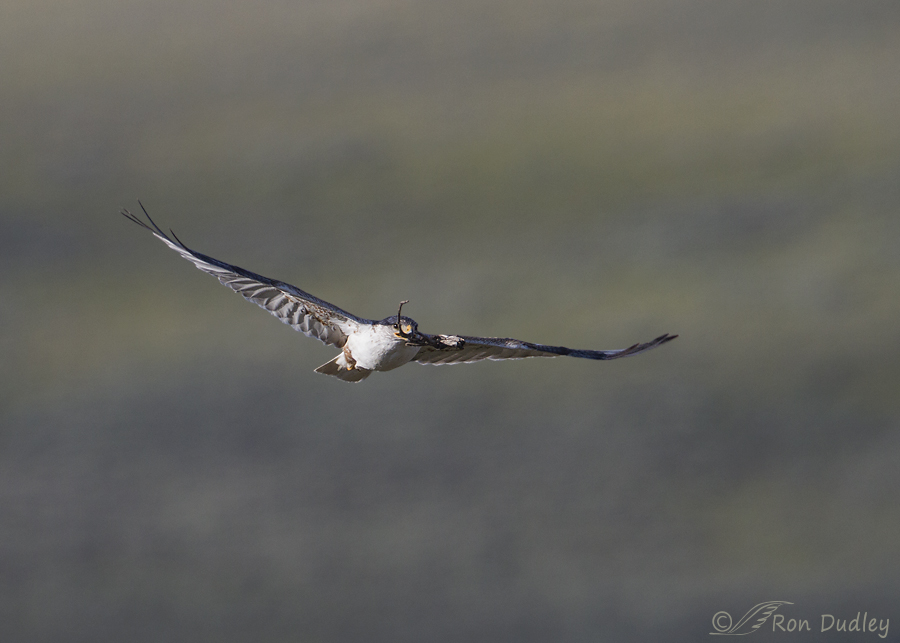
and returned with more nesting material.
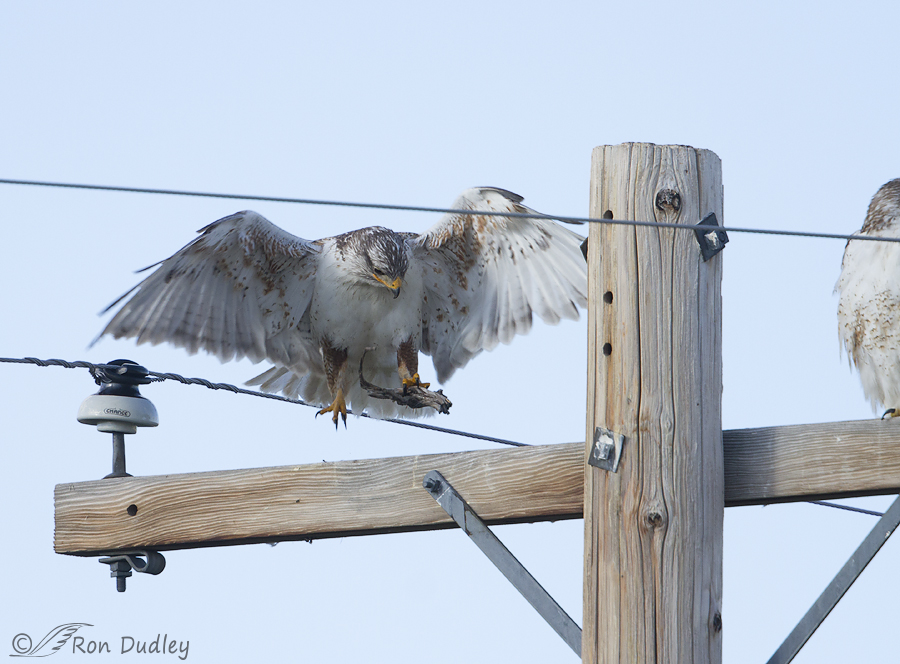
This time he “played” with the stick for about two minutes, manipulating it in his beak and talons and even jumping into the air with it several times.
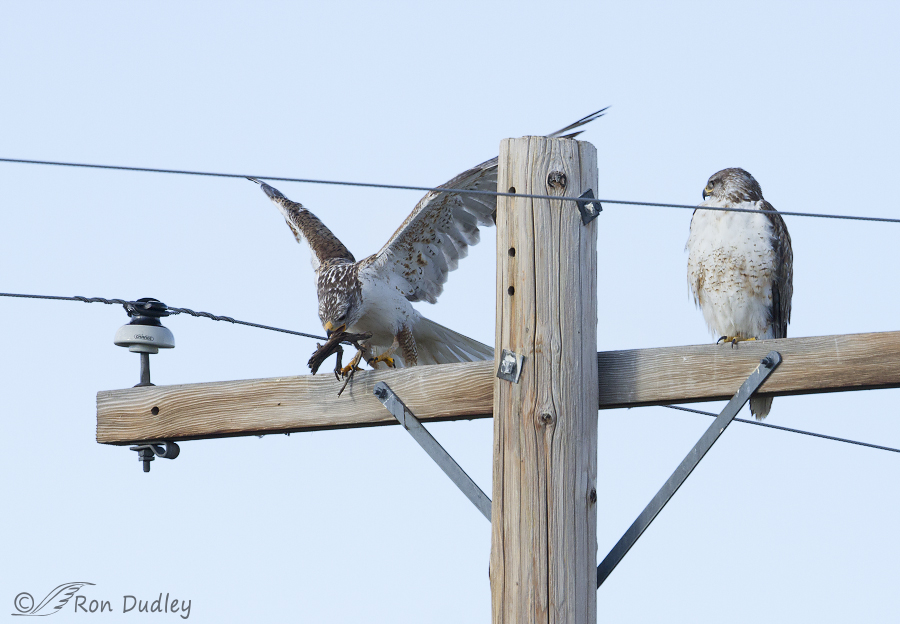
And then he leaned over the pole crossbeam and seemed to intentionally and very deliberately…
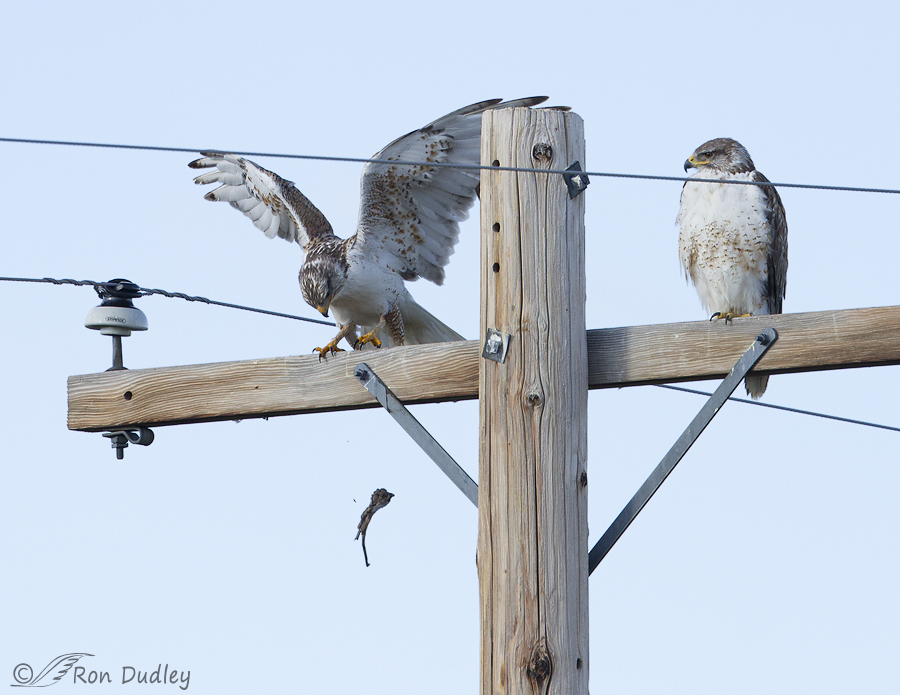
drop it to the ground.
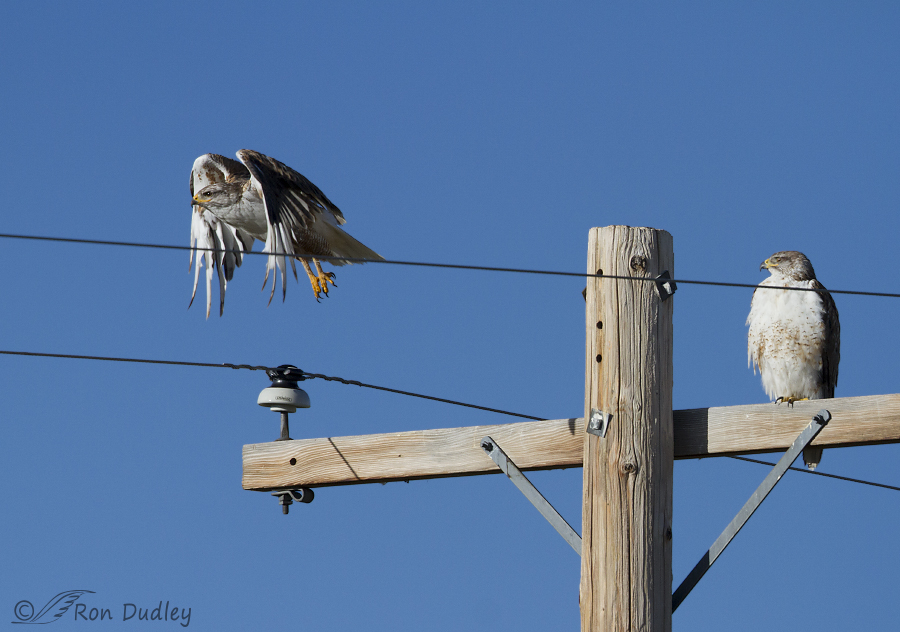
About two minutes later he took off…
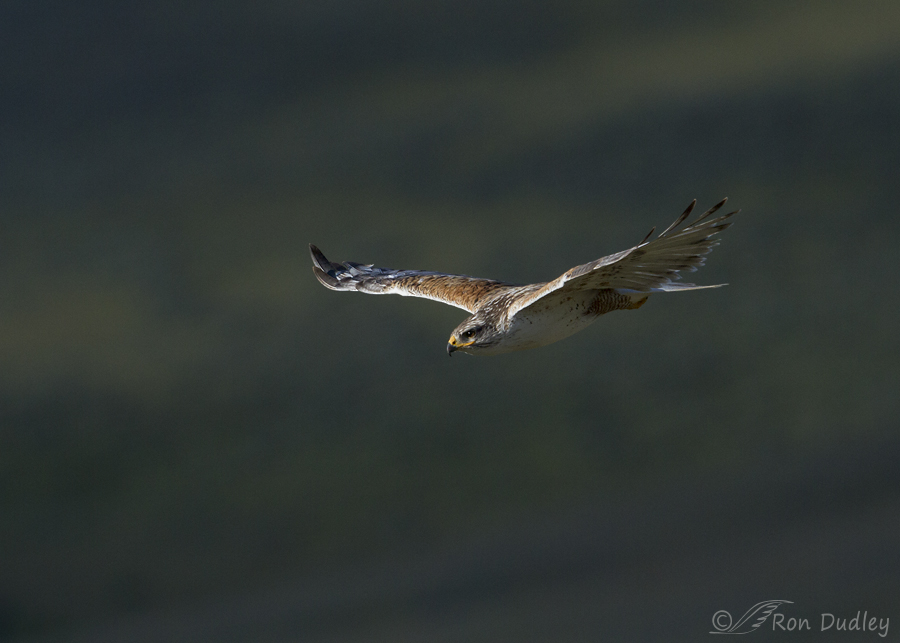
for an unknown destination and didn’t soon return so I drove up the road looking for other opportunities.
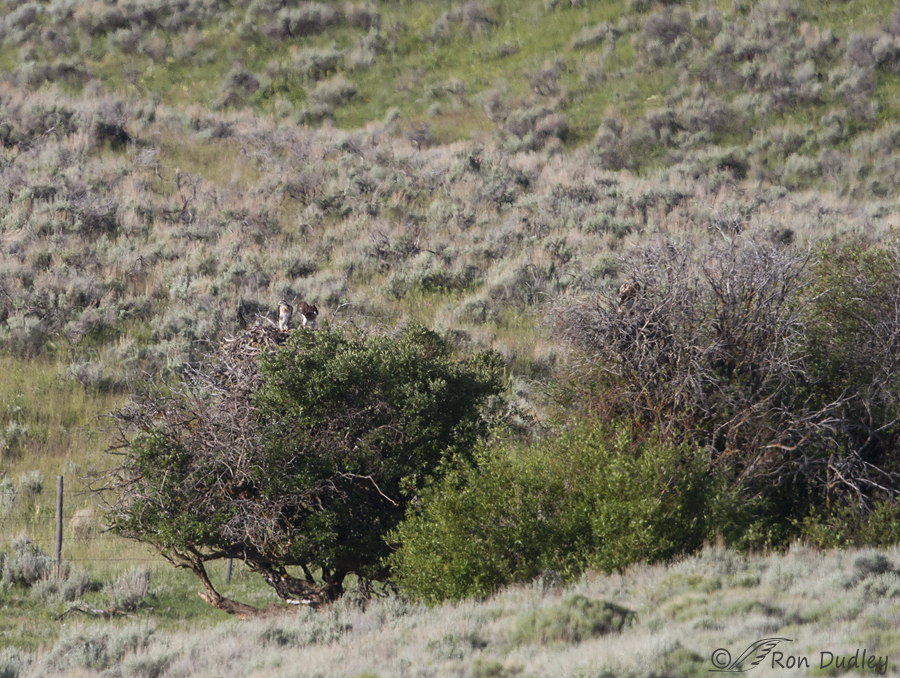
A short distance away and perhaps 3/4 of a mile from the pole the two hawks were on is this nest of another pair of Ferruginous Hawks. It had 3 youngsters on the nest (only 2 can clearly be seen here) in the tree on the left and one of the parents can be seen in the tree to the right. This image was taken almost immediately after the previous ones so I’m nearly positive that the two hawks on the pole were not associated with this nest.
Thoughts like these keep running through my mind:
- What was the significance of the behavior with the (apparent) nesting material that I observed. I attempted to do some research on that but came up empty.
- Why would such behaviors occur so late in the season? At these latitudes Ferruginous Hawks build or refurbish nests in March or April and as you can see in the final image this nest (and others in the area) had already produced near-fledglings.
- Why would such behaviors occur at the top of a power pole and not at the nest site? Most Ferrug nests are in low trees or shrubs or on cliffs or ground outcrops that are relatively low to the ground. None of the other Ferrug nests in the area that I’m aware of are on power poles.
- I wondered if the pair I photographed was attempting to re-nest after failing the first time. There was a late spring cold-snap in the valley that caused countless nest failures of species like Mountain Bluebirds but BNA says that second or late broods in the season do not occur with Ferruginous Hawks.
- Perhaps the behavior I photographed had nothing directly to do with nesting but had some other significance. If so I’m stymied as to what it is.
As many of you know I’m truly fascinated by bird behaviors. This one intrigued me enough that I was willing to post some pretty low-quality images to see if any of my readers have thoughts or observations about what I observed. If not I hope you enjoy the images and behaviors anyway…
Ron


Did you only see one adult at the nest site Ron? If so, two other thoughts occurred to me:
1. Perhaps the male at the power pole was the male of the nest you observed. The female on the pole may have been a non-breeding ‘floater’ that he was attempting to court. While it is unusual, even this late in the season male and female birds will exhibit courtship behavior. I have seen it occur year-round. Or…
2. The female at the power pole may have been from the nest you observed. In this case, the male may have been a non-breeding ‘floater’ attempting to court her away from her current mate.
Adult females are generally more present at nesting sites while the males are out hunting so I suspect the first of these two thoughts may be more likely. Or they may just be two non-breeders hanging around solidifying their pair-bond for next year…
Bird behavior is fascinating!
Very interesting possibilities, Neil. I hadn’t thought of that but from what I know about raptors (I’m only moderately knowledgeable) it makes sense.
There was only one adult at the nest site that I could see a couple of minutes after I took these photos. I’d seen both adults there on previous occasions.
Thank you for chiming in on this.
Wonderful and puzzling sequence. One question Ron and I probably would know the answer if I knew more about photography, but since I’m not please bear with me, why is the sky a different blue in different pictures in the sequence?
Thanks, Derek. As I mentioned in my text there were two reasons for the different sky colors – the white balance went wonky on my 7D for one sequence of shots and the light was constantly changing because of intermittent clouds behind me where the sun was coming up. When that happens, during processing you have to adjust exposure to get the birds right and that messes with the background brightness and color.
I get a kick out of the interpretations, and noticed her sideways glance and seeming disinterest, definitely worth recording the behaviours of these two.Reminds me of some human couples that I have observed.
Her expression is priceless. I love the sideways glance in the first shot where he drops the sticks.
Actually reminds me of our cats. They go off find some random object and play with it for a bit, get bored, and then go off and finds another random object.
Jeff, Some birds actually do “play”. But BNA says that none has been reported with this species.
I am intrigued by the behaviour, and love Mikal’s interpretation, and Alison’s poem. Thank you one and all.
Thanks, Elephant’s Child. To say that I’m intrigued by the behavior is an understatement…
After many years of observing bird behavior, I believe I understand this sequence.
His thought bubble is saying “But, Baby, why don’t you love me like you used to do? The last time I gave you sticks, we flew around and mated for days. What did I do wrong? Come on sweetheart! You don’t like that stick? Here, look at this one. Baby, Baby, you’re the only one for me! Come on Baby, I love you! I’ll bring you a whole forest of sticks. Please??”
While hers is saying “You always want to play with sticks, play with sticks, play with sticks. No, I’m not interested. I have a royal headache. Good Grief, it’s July! So drop that bleeping stick, we have to get ready to migrate.”
Ha!, Who knows, Mikal – you could be right…
Velly velly interesting! ;>)
Charlotte
Thanks, Charlotte.
Some beautiful captures, Ron!
Thank you, Annie.
If these birds form life-time pairs, I wonder if this is a bonding ritual? In spring, I often see pairing birds make the gestures fledglings make to elicit food from a parent, only now they are apparently making the gestures to bond a prospective mate. We see this in dogs: behaviors are made out of context for bonding, such as licking. A mother licks her puppies to stimulate feeding, movement and defecation; she licks her owner as a gesture of affection, or bonding
Could be, Mark – though I’m a bit surprised to see it this late in the year. BNA says that in their southern range they may remain mated throughout the year but birds at our latitudes form pair bonds in early spring.
A pair of red-tailed hawks nested across the street from my home this year. They successfully raised one bird, which still periodically hangs out around the nest, giving feeding cries. The parents show up on occasion, but not as often as the fledgling. This morning, a saw a hawk bringing nesting material to the nest. When I got out on my roof to see what was going on and hopefully grab a photo, the bird left. Throughout this episode, I only heard fledgling cries, so I do believe this was the fledgling bringing in nesting material; when the adults show up they nearly always scream–especially when I get out on my roof. So what would this mean? A display to tell the parents, “hey, let’s keep this thing going; keep feeding me!”?
Interesting behavior, Mark and I don’t know what it means. Perhaps someone else has some ideas?…
Love that poem, Alison … and Ron … great series of images … a fun peek into the private lives of some beautiful creatures. I’m no help as to what is going on here, but I did enjoy the visit!!!
Thanks, Lois. Glad you enjoyed the visit!
Do you think he was just playing? Practicing? Addlepated attempt at nest building?
I don’t know, Patty. I’m baffled.
Ron, these were a wonderful series of shots and a nice timeline. Baffling indeed! And a thank-you to Alison for bringing to mind Wendell Berry’s poem. Very appropriate.
I agree, Angela- the Berry poem from Alison was perfect.
HI! enjoyed running thru your photo’s this A.M.! Keep up the great shots and have a great day!
Thank you, Hummingbird Lover.
Ron and Alison. Thanks. Seems like Wendell berry always knows what nature is really up to. Maybe Mr Ferrug was showing off for his lady?
Diana, if he was I don’t think she was suitably impressed…
Ron, I love this sequence and your questions, which seem as stimulating as many answers! For some reason, this poem of Wendell Berry’s comes to mind:
The Real Work
It may be that when we no longer know what to do
we have come to our real work,
and that when we no longer know which way to go
we have come to our real journey.
The mind that is not baffled is not employed.
The impeded stream is the one that sings.
Neat poem, Alison. I especially like the last two lines.